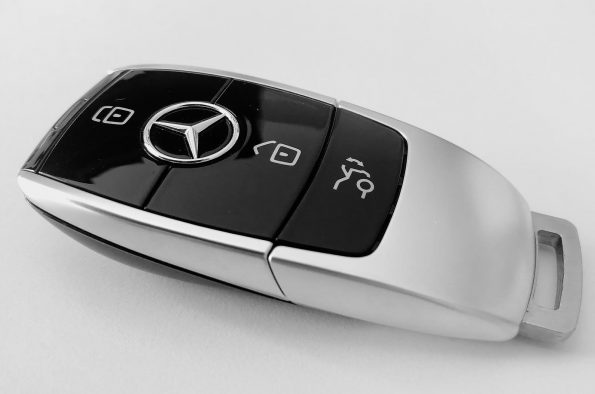Unlocking a car door with a key is very rare on newer cars with almost all having some kind of remote to lock and unlock the doors. While it’s not good for surfers who relished the plain old key’s ability to be put in a wet place without worrying about it, the rest of the world loves them as it allows you to unlock the car while walking towards it by simply pushing a button on a radio transponder that’s small enough to keep in your pocket.

The simple metal car key was the best option for those who needed to get their key wet
The signal is sent as a complex, encrypted rolling (changing) code which makes it difficult to hack and steal. The key fob transmits this code to the car, anywhere between 5-20 metres (although this can be improved by using a parabolic reflector, like your skull – hold the key up to the side of your head to get more range).
Many key fobs also do other things like activate the alarm, open the windows, open the boot or even start the engine.

This key fob also opens the boot
A newer invention is the proximity key. This key works only when it’s close enough to the car for the car to detect it is there (usually within a metre of the car or inside it. For security purposes, having a proximity key with a long range is not a good idea as it would allow someone to open and start the car when the key holder wasn’t near.
Proximity keys can work in the same way as a regular vehicle remote, i.e. by pushing buttons on the key fob, but they also allow you to keep them in a pocket or handbag and you either press a button on the door handle or when you put your hand behind the door handle a sensor unlocks it.
Once inside, the proximity key can be used to authorise the engine start process, usually by pushing a button while the brake or clutch pedal are depressed.
There’s still more scope for improvement of this system, such as by using your smartphones near-field communication (NFC) capability to unlock the car (although, there’s the risk you’ll be locked out if your smartphone is flat).
